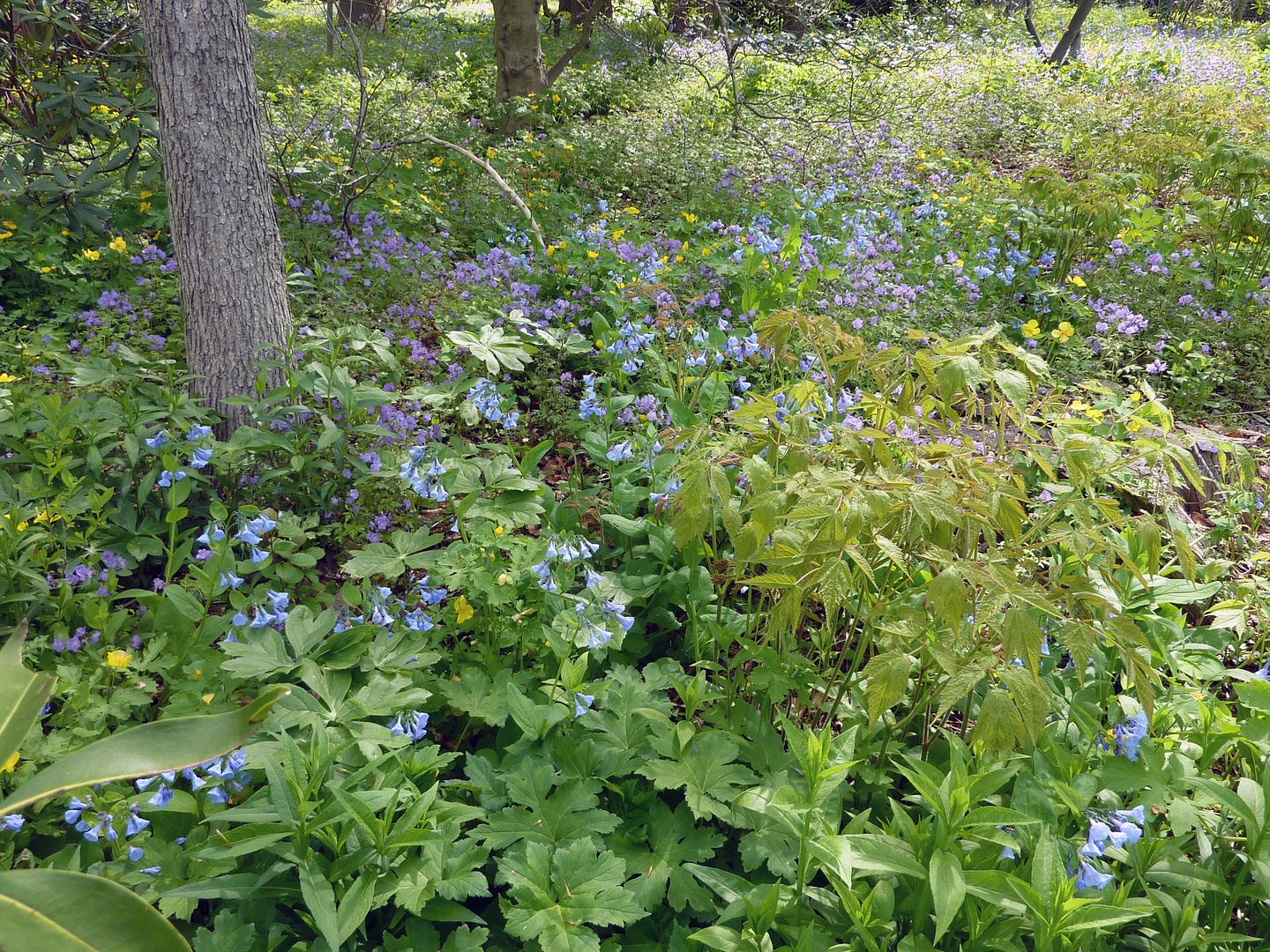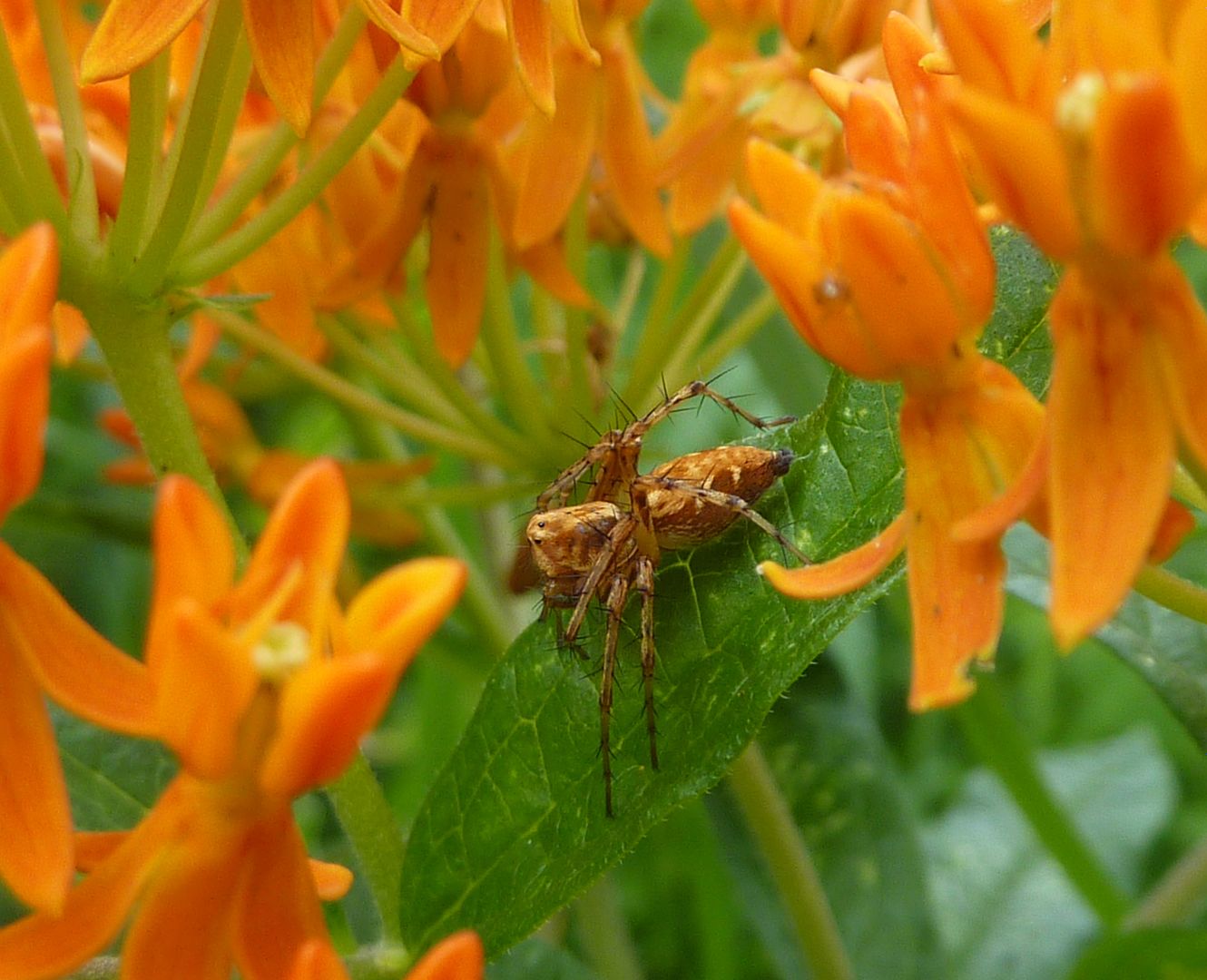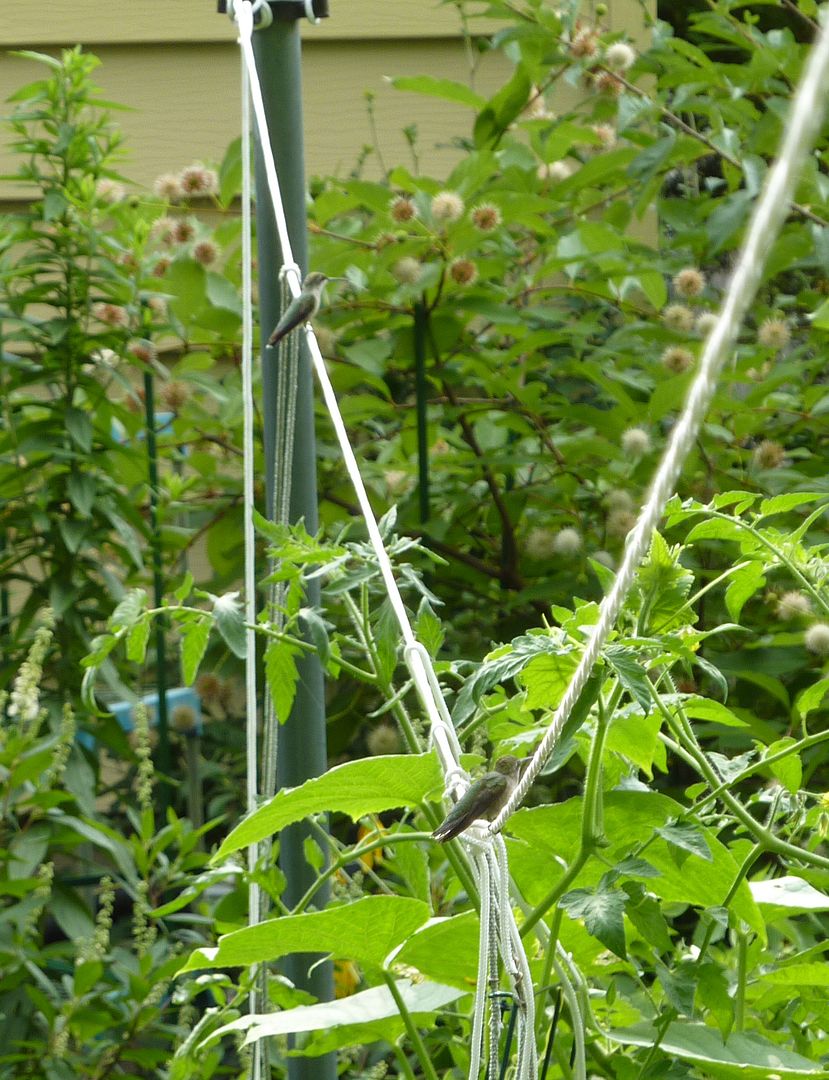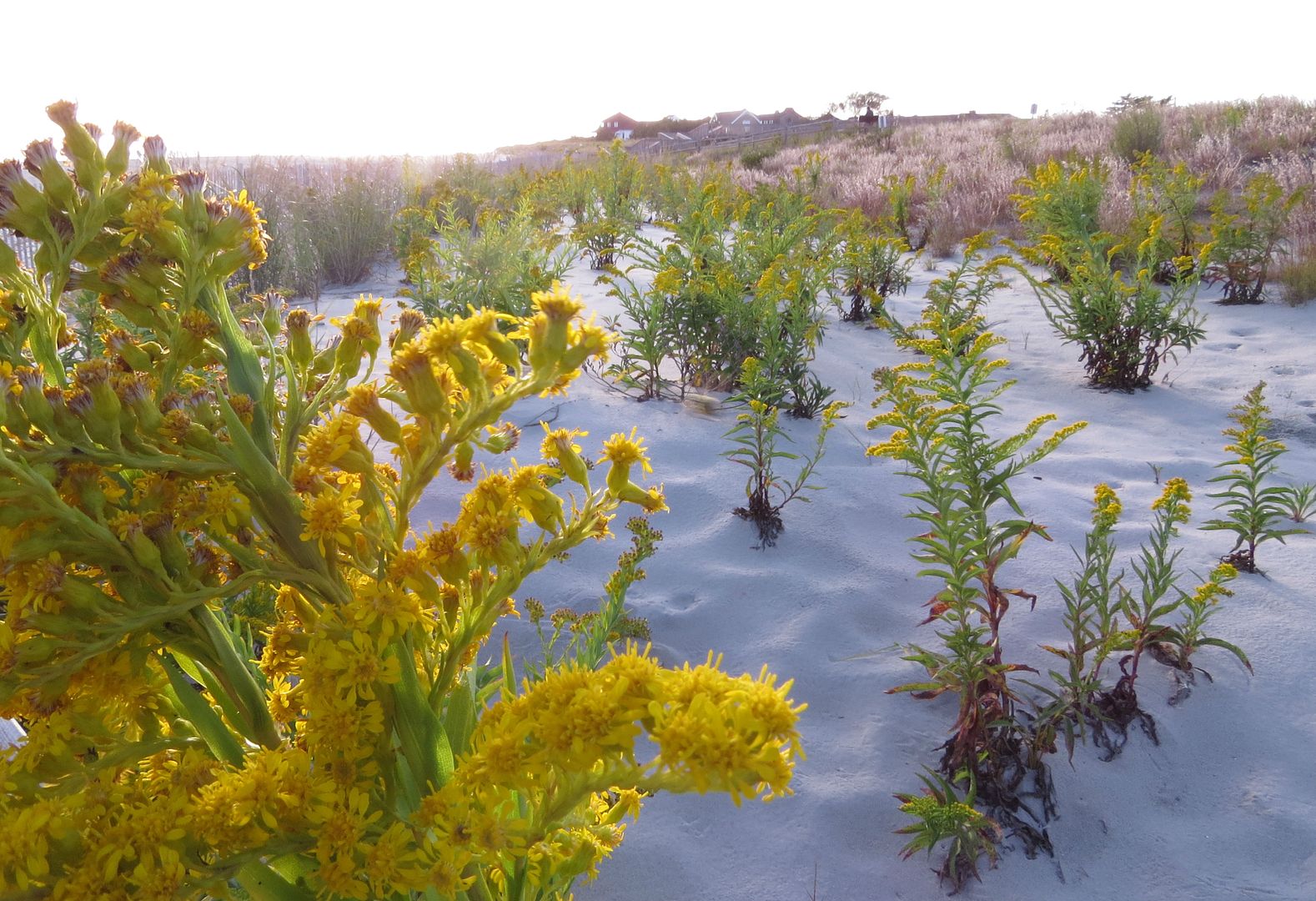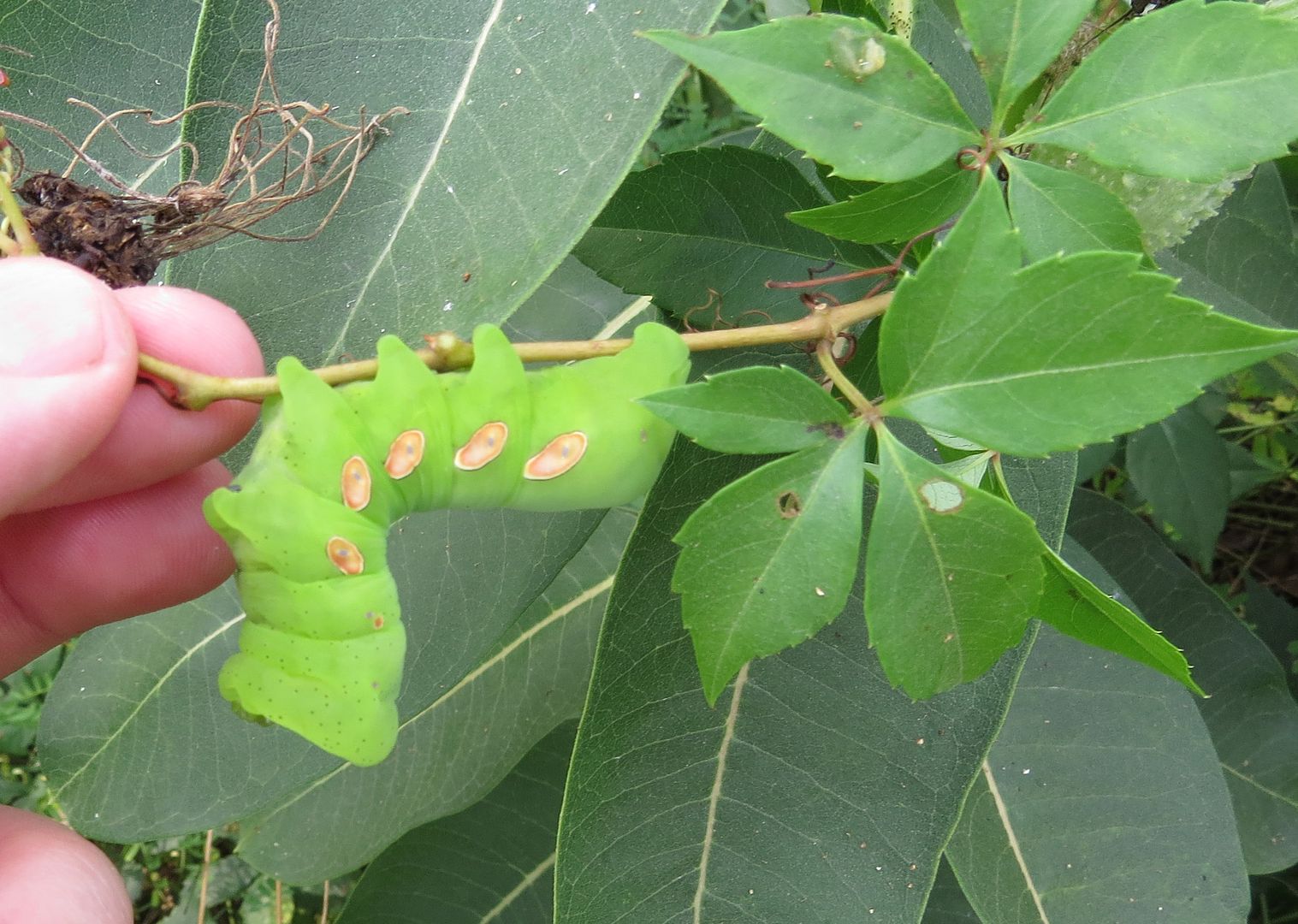Friday, January 31, 2014
EcoBeneficial Interview: Dr. Doug Tallamy In His Garden on the Importanc...
Kim Eierman has a rather nice Youtube channel and website, EcoBeneficial where she interviews Doug Tallamy in a number of videos. Above is the longest of them so far but there are others where Doug walks around his garden a little showing off different native plants and caterpillars.
Monday, January 27, 2014
Sunday, January 19, 2014
Vanilla Ice Goes Amish
I just found out that this was a thing.
There is an alarming amount of people who "live off the grid" but also have their own TV shows.
There is an alarming amount of people who "live off the grid" but also have their own TV shows.
Thursday, January 16, 2014
Certain Plants Compete for Ants
A new study came to my attention today titled "Competition as a Merchanism Structuring Mutualisms" by Robert J. Warren II1, Itamar Giladi2, and Mark A. Bradford3
I haven't read it fully yet however I think I got the gist. They setup two plots of Asarum arifolium (Wild Ginger) and Anemone americana (Hepatica), two plants that disperse their seeds via Myrmecochory. Basically a substance called elaiosome (ant food) is attached to the seed, the ants find the seeds and are encouraged to bring them back to the nest where they are planted. The authors point out that the Hepatica flowers earlier and produces smaller seeds than the Wild Ginger which flowers later and has slightly larger seeds. They suggest that larger seeds are always favored by the ants, and true enough larger seeds tend to have larger packets of elaiosome on them. Thus the Heptaica produces smaller seeds because it can get away with it and not have to compete with the larger seeds of the Wild Ginger.
This study could be expanded had they included Woodland Poppy and Trilliums which also follow this pattern, but Wild Ginger seeds are larger than Woodland Poppy... and then their argument falls apart completely when you include Violets which have seeds smaller than Hepatica. Twinleaf also has Trillium-sized seeds so there isn't a whole lot of support here.
We've already known that ants favor larger seeds because they plants produce better seeds and a higher quality of elaiosome on those that were pollinated better than others. Open a Trillium seed pod and you'll see some seeds are half the size of all the rest and even some that didn't even develop at all.
I'll read the rest of the study in full later on.
I haven't read it fully yet however I think I got the gist. They setup two plots of Asarum arifolium (Wild Ginger) and Anemone americana (Hepatica), two plants that disperse their seeds via Myrmecochory. Basically a substance called elaiosome (ant food) is attached to the seed, the ants find the seeds and are encouraged to bring them back to the nest where they are planted. The authors point out that the Hepatica flowers earlier and produces smaller seeds than the Wild Ginger which flowers later and has slightly larger seeds. They suggest that larger seeds are always favored by the ants, and true enough larger seeds tend to have larger packets of elaiosome on them. Thus the Heptaica produces smaller seeds because it can get away with it and not have to compete with the larger seeds of the Wild Ginger.
This study could be expanded had they included Woodland Poppy and Trilliums which also follow this pattern, but Wild Ginger seeds are larger than Woodland Poppy... and then their argument falls apart completely when you include Violets which have seeds smaller than Hepatica. Twinleaf also has Trillium-sized seeds so there isn't a whole lot of support here.
We've already known that ants favor larger seeds because they plants produce better seeds and a higher quality of elaiosome on those that were pollinated better than others. Open a Trillium seed pod and you'll see some seeds are half the size of all the rest and even some that didn't even develop at all.
I'll read the rest of the study in full later on.
Labels:
Ants,
Myrmecochory,
Seeds,
Study,
Trilliums
Wednesday, January 8, 2014
Bees, Butterflies and Blooms (Videos)
So here is a series of neat videos that took place, I believe, a year or two ago. It takes place in Europe so their idea of a Meadow and what plants should grow there are different than our North American Meadows. A lot of what they're planting seem to be seed mixes that are available in the nursery trade pretty much anywhere in the world. They're really well done videos, and watching them makes me feel annoyed that we don't have anyone like this making documentaries like this here in the US... that I'm aware of.
The emphasis is on feeding pollinators While this is great, the truth of the matter as I understand it is that natives are always better. They are the plants that the native pollinators evolved with to pollinate, many are very selective in their diet. Some bees are very select in the nutritional value of the pollen and nectar they take in, to the point where their young my not develop if they're fed the wrong diet. Given the choice though it is always a thousands times better to grow a random seed mix over a lawn. While the ideal nectar and pollen source may not be present, at least the pollinator has a selection. Of course there are tons of generalist pollinators that you can find in just about any garden. These don't have as selective pallet and are happy to be on most flowers. Most of the plants featured in these videos are offered at local garden centers thus very generalized. So while it's good they're providing food, I believe that if they had a wider range of native plants available to them it would help fix the issue of native plants having a shorter bloom time. Enjoy.
The emphasis is on feeding pollinators While this is great, the truth of the matter as I understand it is that natives are always better. They are the plants that the native pollinators evolved with to pollinate, many are very selective in their diet. Some bees are very select in the nutritional value of the pollen and nectar they take in, to the point where their young my not develop if they're fed the wrong diet. Given the choice though it is always a thousands times better to grow a random seed mix over a lawn. While the ideal nectar and pollen source may not be present, at least the pollinator has a selection. Of course there are tons of generalist pollinators that you can find in just about any garden. These don't have as selective pallet and are happy to be on most flowers. Most of the plants featured in these videos are offered at local garden centers thus very generalized. So while it's good they're providing food, I believe that if they had a wider range of native plants available to them it would help fix the issue of native plants having a shorter bloom time. Enjoy.
Labels:
Bees,
Butterflies,
Documentary,
Meadows,
Seeds,
Video
Tuesday, January 7, 2014
2013 Best of Nature
The year in what I would consider to be nature started in my backyard. I just loved how the Pipevine was leafing out. This little plant has grown a few feet every year where it may eventually attract in the prized Pipevine Swallowtail.
Farther south in Delaware, the Mt. Cuba Center's windflower celebration was amazing that year. Fern Leaf Phacelia, Virginia Bluebells, and Woodland Poppy basically carpeted the entire woodland there in patches. I honestly think it would be a brilliant seed mix. Throw in some other woodland plants like Trilliums, Bloodroot, and MayApple and you got yourself some amazing early color.
Fiddler heads to a fern rising up out of the carpet of flowers.
Trillium erectum, which actually smells awful but you do have to shove your nose in the flower to get that effect. It's very pretty otherwise and I'm learning to appreciate the red flowering Trilliums more.
Swamp Pink, Helonias bullata, lined up around their pond this year.
And of course they brought back their raptor bird demonstration. This is always a lot of fun because they have all the birds flying over your head.
One of the Turkey Vultures soaring up in the sky. At one point it landed on the mansion and you immediately saw the inspiration for stone gargoyles in the shape of birds.
Back at my house in New Jersey my own Wildflowers were slowly coming into bloom. Here a Columbine in the front garden is flowering. This plant has gotten bigger and better every year. It's also been seeding itself all over in that particular location.
Woodland Poppy is becoming one of my favorites. They flower for long periods and set seed relatively quick. Ants plant the seeds too which is always a plus with me.
Here in a log I started seeing a few things growing. Among them is a young Woodland Poppy planted no doubt by ants. I've found a few others seedlings growing out from under flower beds and logs where ants like to nest.
Not a caterpillar but the larval stage to a Sawfly. These are very odd group of insects because the larval stage is vegetarian while the adults are either social parasites on beetle grubs and things or predators of other insects. It's eating the flowers to my Elderberry.
The foliage of my meadow garden had started attracting more life higher up on the food chain. A rabbit or two got stuck in the yard and for weeks we on end our dog just couldn't chase the things out. They kept darting through the various gardens and patches of grass that we allow to grow knee high. I try to keep things looking as orderly as I can but it's clear the abundance of seeds and foliage are attracting more advanced rodents and mammals.
I didn't see any Monarchs this year but the Milkweed Seed Beetles had their fill of the milkweed. These are rather colorful beetles who's larva feed on the milkweed leaves. If I recall right they over winter in the adult stage and lay eggs each spring. So I should see even more of these beetles flying around assuming the snows don't kill them.
I found a spider which resembled the milkweed flowers around it.
Purple Milkweed, Asclepias purpurascens, started to flower in my yard finally.
Also flowering for the first time was Red Milkweed, Asclepias rubra.
I'm not sure I agree on the common name "Red" becasue their flowers are clearly a shade of hot pink.
Tall Bellflower, Campanula americana. This was the little seedling that could. Of a whole pack of seeds I got six plants to grow, of those only one survived the winter.
This started flowering in July or August and kept flowering well into November, which amazed me. Basically after the main flowers finished blooming it quickly developed new ones along side the ones that had already developed into seed pods. So it constantly rebloomed on places where it had already flowered. This was very neat, but sadly a biannual. I already have four more plants potted and planted which should bloom next year. Hopefully this parent plant though was able to seed it self around a little and I'll have a more consistent blooming each year.
Wild Senna. I've had this plant for a while but it's always been in a dry spot. This year was so wet though that it didn't matter.
Testing out my new camera.
Ground Cherry. I was happy to find a nursery selling this edible plant. Word of Warning: you have to wait for the berries to ripen fully before eating them. They taste just like cherry tomatoes only with a hint more acid to them. Not something you want to eat more than a few at a time, just in case there's some lingering toxin about but really they can just make you sick and probably won't kill you. The taste good.
Cup Plant, basking in the sun.
Rudbeckia flowers ready to open.
A Four-Eyes Beetle which you find on Milkweed. I've seen them in my yard but they never seem to have population explosions.
Another nice thing about my new camera was being able to take shots of hummingbirds.
Not a good shot but taken to demonstrate that the Coral Honeysuckle is getting attention.
Hummingbirds are fun to watch because it's almost like they play with one anther. Really they're bopping one another on the head to mark which food source is theirs but fun to watch all the same.
Here they are taking a time out on the cloths line.... which I tried to grow cucumbers up. Note the buttonbush in the background.
Western Sunflower, Helianthus occidentalis, was a neat one to try. It's a short rosette of leaves with a long flower stem that comes up a few feet.
Here is a shot of the meadow garden. I still don't have an answer to get rid of the unwanted grass species other than to plant more wildflowers. It seems to be going okay.
Great Blue Lobelia, Lobelia siphilitica. This is one I bought at a local nursery as a spontaneous buy. I'm actually really happy with it. They're short lived though but I'm told to cut the flower stem when it's done and lay it down right where the plant was to encourage seeds to grow back again.
The many shades of New England Asters. Violet.
Purple.
Hot Pink/Magenta.
Blanket Flower.
A Violet growing in the clump of dirt in an uprooted tree.
The fall color of Virginia Creeper.
Showy Goldenrod being Showy. Solidago speciosa.
Narrow-leaf Sunflower, Helianthus angustifolius, which I think is one of the prettier perennial sunflowers.
It's one of the latest species to bloom, and boasts these deep dark centers to the flowers.
I found one of the Golden Aster species growing in the wild this year. This was down in Cape May too. It's very sunflower like but at the same time it's not a true Aster either. I honestly don't know what would keep it from being put in one group or the other but it is related and in a category all it's own.
I found what had to be a strip of four miles or so along the shore down in Cape May where someone had planted foot ball field sized patches of Sea Side Goldenrod, Solidago sempervirens.
Monarchs were flying off for their migration down in Mexico.
And I ended the year down in Cape May watching the sunset with some fellow gardening friends.
Farther south in Delaware, the Mt. Cuba Center's windflower celebration was amazing that year. Fern Leaf Phacelia, Virginia Bluebells, and Woodland Poppy basically carpeted the entire woodland there in patches. I honestly think it would be a brilliant seed mix. Throw in some other woodland plants like Trilliums, Bloodroot, and MayApple and you got yourself some amazing early color.
Fiddler heads to a fern rising up out of the carpet of flowers.
Trillium erectum, which actually smells awful but you do have to shove your nose in the flower to get that effect. It's very pretty otherwise and I'm learning to appreciate the red flowering Trilliums more.
And of course they brought back their raptor bird demonstration. This is always a lot of fun because they have all the birds flying over your head.
One of the Turkey Vultures soaring up in the sky. At one point it landed on the mansion and you immediately saw the inspiration for stone gargoyles in the shape of birds.
Back at my house in New Jersey my own Wildflowers were slowly coming into bloom. Here a Columbine in the front garden is flowering. This plant has gotten bigger and better every year. It's also been seeding itself all over in that particular location.
Woodland Poppy is becoming one of my favorites. They flower for long periods and set seed relatively quick. Ants plant the seeds too which is always a plus with me.
Here in a log I started seeing a few things growing. Among them is a young Woodland Poppy planted no doubt by ants. I've found a few others seedlings growing out from under flower beds and logs where ants like to nest.
Not a caterpillar but the larval stage to a Sawfly. These are very odd group of insects because the larval stage is vegetarian while the adults are either social parasites on beetle grubs and things or predators of other insects. It's eating the flowers to my Elderberry.
The foliage of my meadow garden had started attracting more life higher up on the food chain. A rabbit or two got stuck in the yard and for weeks we on end our dog just couldn't chase the things out. They kept darting through the various gardens and patches of grass that we allow to grow knee high. I try to keep things looking as orderly as I can but it's clear the abundance of seeds and foliage are attracting more advanced rodents and mammals.
I didn't see any Monarchs this year but the Milkweed Seed Beetles had their fill of the milkweed. These are rather colorful beetles who's larva feed on the milkweed leaves. If I recall right they over winter in the adult stage and lay eggs each spring. So I should see even more of these beetles flying around assuming the snows don't kill them.
I found a spider which resembled the milkweed flowers around it.
Purple Milkweed, Asclepias purpurascens, started to flower in my yard finally.
Also flowering for the first time was Red Milkweed, Asclepias rubra.
I'm not sure I agree on the common name "Red" becasue their flowers are clearly a shade of hot pink.
Tall Bellflower, Campanula americana. This was the little seedling that could. Of a whole pack of seeds I got six plants to grow, of those only one survived the winter.
This started flowering in July or August and kept flowering well into November, which amazed me. Basically after the main flowers finished blooming it quickly developed new ones along side the ones that had already developed into seed pods. So it constantly rebloomed on places where it had already flowered. This was very neat, but sadly a biannual. I already have four more plants potted and planted which should bloom next year. Hopefully this parent plant though was able to seed it self around a little and I'll have a more consistent blooming each year.
Wild Senna. I've had this plant for a while but it's always been in a dry spot. This year was so wet though that it didn't matter.
Testing out my new camera.
Rudbeckia flowers ready to open.
Hairy Swamp Milkweed.
Another nice thing about my new camera was being able to take shots of hummingbirds.
Not a good shot but taken to demonstrate that the Coral Honeysuckle is getting attention.
Hummingbirds are fun to watch because it's almost like they play with one anther. Really they're bopping one another on the head to mark which food source is theirs but fun to watch all the same.
Here they are taking a time out on the cloths line.... which I tried to grow cucumbers up. Note the buttonbush in the background.
Western Sunflower, Helianthus occidentalis, was a neat one to try. It's a short rosette of leaves with a long flower stem that comes up a few feet.
Here is a shot of the meadow garden. I still don't have an answer to get rid of the unwanted grass species other than to plant more wildflowers. It seems to be going okay.
Great Blue Lobelia, Lobelia siphilitica. This is one I bought at a local nursery as a spontaneous buy. I'm actually really happy with it. They're short lived though but I'm told to cut the flower stem when it's done and lay it down right where the plant was to encourage seeds to grow back again.
The many shades of New England Asters. Violet.
Purple.
Hot Pink/Magenta.
Blanket Flower.
A Violet growing in the clump of dirt in an uprooted tree.
The fall color of Virginia Creeper.
Showy Goldenrod being Showy. Solidago speciosa.
Narrow-leaf Sunflower, Helianthus angustifolius, which I think is one of the prettier perennial sunflowers.
It's one of the latest species to bloom, and boasts these deep dark centers to the flowers.
I found one of the Golden Aster species growing in the wild this year. This was down in Cape May too. It's very sunflower like but at the same time it's not a true Aster either. I honestly don't know what would keep it from being put in one group or the other but it is related and in a category all it's own.
I found what had to be a strip of four miles or so along the shore down in Cape May where someone had planted foot ball field sized patches of Sea Side Goldenrod, Solidago sempervirens.
Monarchs were flying off for their migration down in Mexico.
And I ended the year down in Cape May watching the sunset with some fellow gardening friends.
Monday, January 6, 2014
2013 Best of Butterflies
From the previous year, my butterfly season started with a series of Black Swallowtail Chrysalises over wintering in a cage I kept down in my basement. Well one emerged prematurely which lead to this shot.
Over the next three months as they hatched out, I did start letting them go. Despite this though I am sad to report that ended my experience with Black Swallowtails for the year. While I'm sure some of them survived, none of them returned to my garden to lay eggs or even pay me a visit.
Now I don't think I did anything particularly bad. Even around carrot farms this species is not considered a pest. For whatever reason they just don't spread dramatically in huge numbers.
I found this Silver Spotted Skipper Caterpillar nestled on my False Indigo tree. It's a new plant I'm trying out, which will hopefully flower this year. Sadly I think a bird ate this little guy.
Hummingbird Moth laying eggs on my Coral Honeysuckle.
A Pandorus Sphinx nibbling on Virginia Creeper. I had no idea these caterpillars were this enormous.
I don't know the name of this one but if I recall right they can spray acid if you disturb them.
A Spicebush Swallowtail sipping at some Hairy Swamp Milkweed. Note the missing orange spot under the wing, how it's replaced with just the blue smear. This species mimics the Pipevine Swallowtail which is poisonous for birds to eat. Despite this ability, it seems the Pipevine Swallowtail doesn't need to be around to have decent Spicebush Swallowtail populations. I'm told though when the Pipevine Swallowtail is around that it benefits all the other species of black butterflies that mimic them.
There were about six of them zooming around this milkweed patch.
One of these days I need to figure out which of the random grasses in my yard is supporting the skipper population.
Every autumn, I'm suddenly blessed with droves and droves of skippers.
And they absolutely loved the Rudbeckia of all things!
New England Asters I'd have expected to be the bigger hit, as it was with everything else. But not the skippers, they worked the Rudbeckia until it stopped blooming. Very strange. Any who this is a Tiger Swallowtail, male judging from the lack of blue along what I call the tramp stamp.
Monarchs! This was an awful year for them. Years ago when I started doing this (back in 2008 maybe?) I planted Swamp Milkweed and with in a few weeks there were Monarchs, not only having sex on the lawn but laying eggs all over the milkweed patch. I had caterpillars all summer long, and witnessed one emerging from its chrysalis. It's actually that moment that brought me tears that I was really hooked on this whole native plant thing. But this year tragically I didn't see a single one in my garden.
It wasn't until I took a trip to Cape May with a few friends that I really saw them this year. There were stands of Seaside Goldenrod planted all along the beach specifically to help the Monarch migration. While I saw a few dozen flying around it really wasn't enough to give me any sort of hope that their population was doing well at all.
I know that they're by no means endangered. It's simply that the population that migrates through the eastern half of North America will be lost. They're doing okay out in California, apparently there's a population that migrates through South America as well, but what a shame it would be to never see the butterfly that inspired me to garden to ever flutter through my yard again.
Subscribe to:
Posts (Atom)


